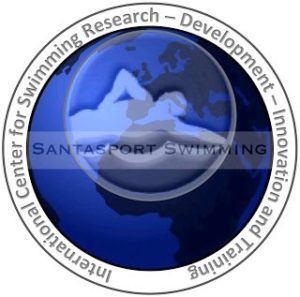Courtesy of Jakka Shemeikka, Head of Aquatics at the Olympic Training Center Rovaniemi.
As a part of our Research, Development and Innovation functions, Olympic Training Center Rovaniemi is running a competitive swimming development program called ‘Modern Dryland Training’. It started from a simple idea of creating better solutions to dryland training for swimmers and coaches globally. Along the way, the focus has shifted to a bigger picture. Today it seems paramount, that we also raise topics that have a modern approach about the synergy of dryland and pool training.
The last few years we have concentrated on studying the movement in swimming. We really had to go outside the box to find a new angle on swimming performance. The reason for doing this was that none of the current swimming analyses could provide explanations to why certain things happened in race performances. We wanted to find the exact answer to this question: What are the specific elements in training that makes the swim metrics improve resulting in a better performance?
The journey of finding answers continues as we start a new research project at the end of this year.
The findings we’ve had so far provide a better understanding on efficient movement in the water. There have also been some troubling findings that reflect on athletes and their capabilities. The rhythm of movement can explain performance capabilities, so we have been developing dryland assessments that reflect on swimming performance. The research and measurement process starting later this year is all about testing the credibility of this theory, and finding a way to assess the movement also in water.
The Dryland assessments we have already performed have shown us that swimmers can be placed roughly in four categories. Through these advancements, we’ve understood that there cannot be a single level assessment used in swimming, as different levels have different abilities. To have an assessment that serves every level of swimming, you need a proper assessment protocol. These four movement capability categories are presented below.
Swimmers movement capability can be:
- Nonexistent (Lower National Level)
These are athletes who might have a high training mentality, but somehow it doesn’t seem to work for them. Their body just don’t seem to find the rhythm in movement even with specific exercises. No matter how hard they work, they rarely place high nationally. On their best days, they might reach semifinals at Nationals.
- Trainable, but not a routine (Lower International Level)
These athletes look more fluent in the water than the average swimmer. They are able to perform most of the coordinative tests that you give them, but it doesn’t come naturally for them. For this reason, they might have a clear difference on left and right side functionality. They gain success and advance to the international level. On a good day, they might reach semifinals in a major international meet.
- Natural (Top International Level)
These are the most fluent swimmers there are. Their swimming seems effortless and after a race it might appear that they are not even tired. They might still possess coordination disadvantages, and by resolving those issues, they can reach another level in their performance.
- Natural, but not in use (Lower National Level)
Realizing the existence of this group was a bit shocking. The swimmers in this group may actually possess a great gift, but don’t know it. The reason for this is that they don’t get the right stimulus in training, and so they are not aware of their abilities. As they are accustomed to their current situation, it would take them a while to reach their true level, or they just swim along never finding their true potential.
Talent is something that comes up often in a sports related discussion. Through movement analysis, it is easy to understand the progression for each athlete. Many qualities are trainable, and it is possible to get better when you understand where you stand and what your capabilities are.
Olympic Training Center Rovaniemi is one of the six Olympic Training Center’s in Finland. Together with a diverse network of Universities, sports federations and associations, research institutes and other experts, we are able to offer a wide level of education in multiple fields of sports and well-being as well as in different sports.
Santasport Swimming is growing International research development and innovation program for swimming. Our goal is that in the next five years we will run research on both learn to swim and high- performance swimming using our previous experience and soon to be built new aquatic facility. Thru our research work, we are hoping to offer new insights on swimming development.


